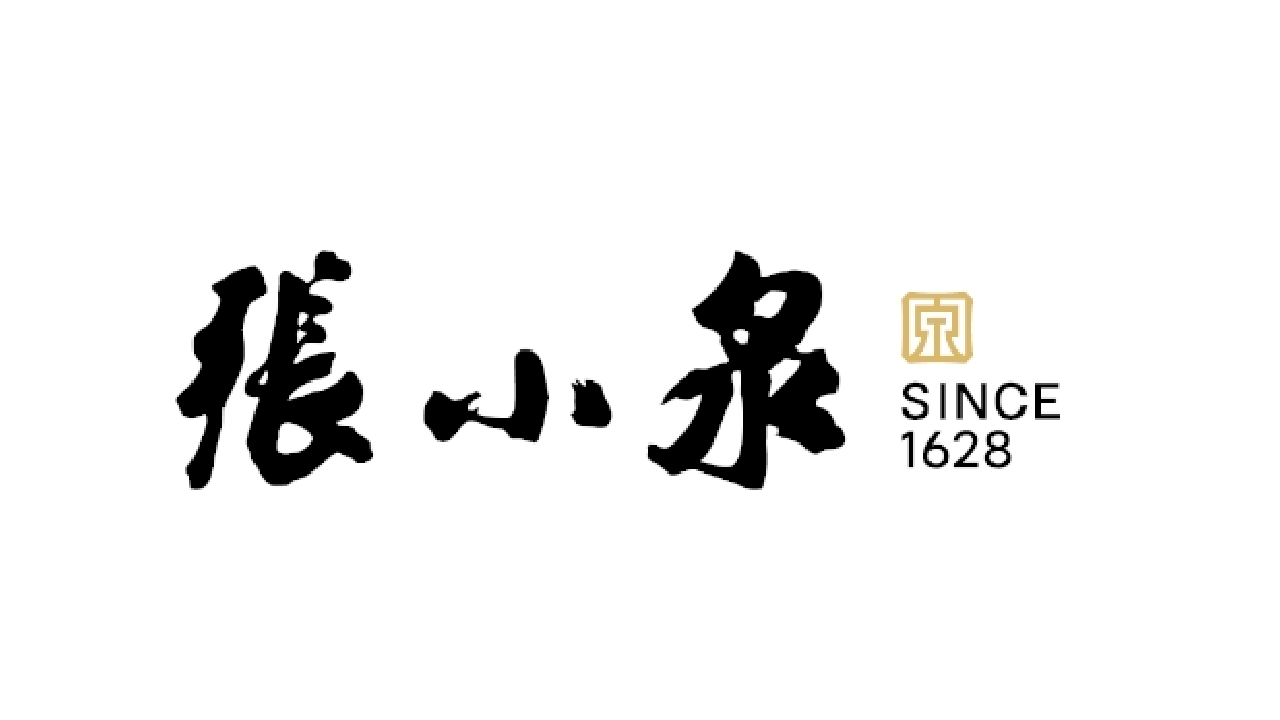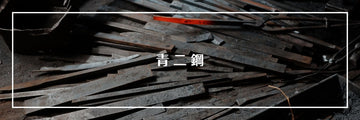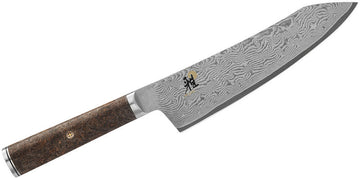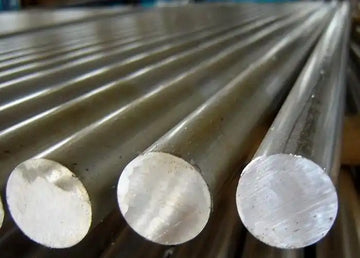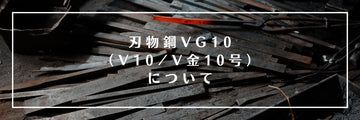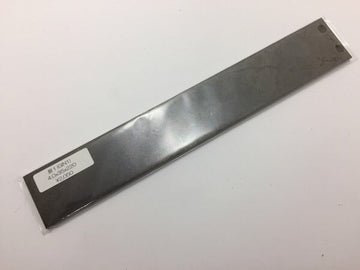Blue Steel #2 (Aogami 2) is a high-carbon steel alloy produced by Hitachi Metals that has earned a stellar reputation among both professional chefs and serious home cooks. It strikes an exceptional balance between sharpness, edge retention, and toughness that few other knife steels can match. With a hardness of 62-63 HRC, Blue Steel 2 delivers outstanding cutting performance while remaining more forgiving than harder, more specialized steels like Blue Steel 1 or Blue Steel Super.

What Blue Steel 2 Is Made Of
Blue Steel 2 combines high carbon content with strategic alloying elements that enhance its performance:
- Carbon: 1.05-1.15% - Provides the high hardness needed for superior edge sharpness
- Chromium: 0.20-0.50% - Improves corrosion resistance compared to White Steel
- Tungsten: 1.00-1.50% - Enhances wear resistance and forms hard carbides for durability
- Manganese: 0.20-0.30% - Improves hardenability during heat treatment
- Silicon: 0.10-0.20% - Strengthens the steel matrix
- Impurities: Extremely low levels of phosphorus (≤0.025%) and sulfur (≤0.004%)
This careful composition creates a fine-grained martensitic structure with well-distributed carbides. The presence of tungsten and chromium distinguishes Blue Steel 2 from White Steel, adding significant wear resistance and modest corrosion protection without sacrificing too much of the sharpening ease that carbon steel is known for.
How Blue Steel 2 Performs In The Kitchen
Hardness And Toughness
Blue Steel 2 achieves a hardness of 62-63 HRC on the Rockwell scale, placing it in the sweet spot for high-performance kitchen knives. This hardness level is high enough to support excellent edge retention but not so extreme that the blade becomes overly brittle.
What makes Blue Steel 2 particularly valuable is its enhanced toughness relative to its hardness level. The carefully controlled carbon content and alloying elements create steel that resists chipping better than many alternatives of similar hardness. This means that while the edge is hard enough to stay sharp through demanding kitchen tasks, it's also resilient enough to handle the occasional bone encounter or accidental twist that might chip lesser steels.
For professional chefs working long shifts and home cooks handling a variety of ingredients, this balance of hardness and toughness translates to reliable performance across a wide range of cutting tasks.
Sharpness And Edge Retention
Blue Steel 2 excels in both initial sharpness and edge longevity. The fine grain structure allows it to take a razor-sharp edge with relative ease, making it perfect for precision tasks like slicing fish for sashimi or finely dicing vegetables.
Where this steel shines is in maintaining that sharpness through extended use. The tungsten carbides dispersed throughout the steel significantly enhance wear resistance, allowing the edge to withstand repeated contact with cutting boards without dulling quickly. Professional chefs report that Blue Steel 2 knives typically maintain usable sharpness through several busy shifts, requiring less frequent touch-ups than White Steel or softer stainless options.
When it does come time to sharpen, Blue Steel 2 responds well to standard whetstones, though it requires slightly more effort than White Steel due to the tungsten carbides. This minor trade-off in ease of sharpening is well worth the significant gain in edge longevity for most users.
Reactivity And Care Requirements
Like all carbon steels, Blue Steel 2 is reactive and will develop a patina over time. However, the small amount of chromium in the composition provides a modest improvement in corrosion resistance compared to White Steel. While still far from stainless, Blue Steel 2 is slightly more forgiving of brief exposure to moisture or acidic ingredients.
Proper care includes:
- Wiping the blade clean during use, especially when cutting acidic foods
- Handwashing with mild soap immediately after use
- Thoroughly drying before storage
- Occasional light oiling, particularly for extended storage
Many users appreciate how Blue Steel 2 develops a distinctive blue-gray patina with use, which adds character to the knife while providing some additional protection against corrosion.

Blue Steel 2 Applications In Kitchen Knives
Ideal Kitchen Applications
Blue Steel 2's balanced properties make it exceptionally versatile across knife styles:
- Gyuto (Chef's knife): An excellent all-purpose knife for slicing, chopping, and dicing a wide range of ingredients
- Yanagiba: Perfect for sashimi and sushi preparation, where the keen edge slices fish without damaging cell structure
- Nakiri: Ideal for vegetable preparation, with the hardness and edge retention to handle hours of repetitive cutting
The steel's combination of sharpness and durability makes it particularly well-suited for workhorse knives that see daily use across various tasks, rather than highly specialized single-purpose tools.
Market Position
Blue Steel 2 knives typically range from $100-$250 depending on size, craftsmanship, and handle materials. This positions them as premium tools but still within reach of serious home cooks and professional chefs.
These knives occupy a sweet spot in the market—offering significantly better performance than entry-level options while remaining more affordable and practical than ultra-premium steels like Blue Super. For many users, Blue Steel 2 represents the ideal balance of performance and value.
Comparison With Other Kitchen Knife Steels
Blue Steel 2 vs. Blue Steel 1
Blue Steel 2 contains less carbon (1.05-1.15%) than Blue Steel 1 (Aogami 2)(1.25-1.35%), resulting in slightly lower hardness (62-63 HRC vs. 63-65 HRC). This translates to approximately 15-20% less edge retention but about 30% better toughness and chip resistance. Blue Steel 1 excels in applications requiring extreme edge retention, while Blue Steel 2 offers better all-around performance and greater forgiveness during general kitchen tasks.
Blue Steel 2 vs. White Steel 1
Blue Steel 2 has slightly less carbon (1.05-1.15%) than White Steel 1 (1.25-1.35%), but contains additional chromium and tungsten that White Steel 1 lacks entirely. White Steel 1 can achieve a slightly higher potential hardness (63-65 HRC vs. 62-63 HRC) and an exceptionally keen edge due to its purity and simple carbide structure. However, Blue Steel 2 provides approximately 35-40% better edge retention and significantly improved chip resistance. The tungsten in Blue Steel 2 makes sharpening slightly more difficult than with White Steel 1, but the trade-off is substantially improved durability during extended use. Professional chefs often choose White Steel 1 for ultra-precise tasks like sashimi preparation, while preferring Blue Steel 2 for general kitchen duties where edge longevity matters more.
Blue Steel 2 vs. White Steel 2
Both steels share similar carbon content (1.05-1.15%), but Blue Steel 2 contains additional chromium and tungsten that White Steel 2 lacks. This gives Blue Steel 2 approximately 30-40% better edge retention and moderately improved corrosion resistance, though White Steel 2 is easier to sharpen to an extremely keen edge. Choose Blue Steel 2 for durability and less frequent sharpening; choose White Steel 2 for ultimate sharpness and ease of maintenance.
Blue Steel 2 vs. Blue Steel Super
Blue Steel Super contains more carbon plus additional molybdenum and vanadium that Blue Steel 2 lacks. This gives Blue Super about 20-30% better edge retention and a higher hardness ceiling (64-65 HRC vs. 62-63 HRC). However, Blue Steel 2 offers approximately 25% better toughness and is notably easier to sharpen. Blue Super represents the premium choice for edge retention, while Blue Steel 2 provides better all-around versatility for most kitchen environments.
Taking Care Of Blue Steel 2 Knives
Basic Maintenance
Caring for Blue Steel 2 requires some attention but is straightforward with consistent habits:
- Wipe the blade frequently during use, especially when cutting acidic foods
- Wash by hand with mild soap after use
- Dry thoroughly immediately after washing
- Apply a light coat of camellia oil or food-grade mineral oil for extended storage
- Store in a dry place, preferably in a wooden sheath or knife block
Many users find that a beautiful patina develops with use, which can be either encouraged (through controlled exposure to certain foods) or minimized (through more vigilant cleaning and oiling) depending on personal preference.
Sharpening Recommendations
Blue Steel 2 responds well to standard sharpening practices:
- Start with medium stones (1000 grit) for edge setting
- Progress to finer stones (3000-6000 grit) for refining and polishing
- The tungsten content provides good feedback during sharpening
- Expect to use slightly more pressure than with White Steel knives
Even users with moderate sharpening skills can achieve excellent results with Blue Steel 2, though it requires a bit more patience than pure carbon steel.
Conclusion
Blue Steel 2 represents one of the most balanced and versatile options in Japanese kitchen knives. Its thoughtful composition delivers excellent edge retention, very good sharpness, and respectable toughness—creating knife steel that performs admirably across a wide range of kitchen tasks.
While it requires more care than stainless alternatives, the performance benefits make it well worth the modest maintenance requirements for serious cooks. For many professional chefs and dedicated home cooks, Blue Steel 2 hits the perfect balance point—offering meaningful improvements in cutting performance without the extreme specialization or fragility of harder, more exotic options.
Whether in a professional kitchen handling hours of prep work or a home setting where versatility and reliability matter, Blue Steel 2 continues to prove itself as one of the most practical high-performance options in the Japanese knife tradition.
FAQs
What is blue steel #2?
Blue Steel #2 (Aogami 2) is a high-carbon Japanese steel produced by Hitachi, containing 1.05-1.15% carbon with added chromium (0.20-0.50%) and tungsten (1.00-1.50%). It achieves 62-63 HRC hardness and offers an excellent balance between edge retention, sharpness, and toughness, making it popular for kitchen knives.
What is blue steel super?
Blue Steel Super (Aogami Super) is Hitachi's premium Japanese knife steel containing ~1.40% carbon plus tungsten, chromium, molybdenum, and vanadium. It achieves 64-65 HRC hardness with superior edge retention but less toughness than Blue Steel #2. It's designed for professional use where maximum edge longevity is prioritized over ease of sharpening.
What is blue steel?
Blue Steel (Aogami) is a family of high-carbon Japanese steels made by Hitachi, named for the blue paper wrapping they come in. They contain tungsten and chromium added to White Steel base for improved edge retention and wear resistance. The family includes Blue Steel #1, Blue Steel #2, and Blue Super, all used primarily in high-quality kitchen knives.
Is blue super steel good?
Yes, Blue Super Steel is excellent for professional kitchen knives, offering exceptional edge retention and wear resistance. It achieves 64-65 HRC hardness with multiple alloying elements that enhance performance. However, it's more difficult to sharpen, less forgiving of poor technique, and requires vigilant maintenance against rust. For skilled users, its performance justifies these demands.
What is the difference between aogami 2 and super?
Blue Steel #2 contains 1.05-1.15% carbon while Blue Super has ~1.40% carbon plus added molybdenum and vanadium that Blue #2 lacks. Blue Super achieves higher hardness (64-65 HRC vs. 62-63 HRC) with 20-30% better edge retention, while Blue #2 offers about 25% better toughness and easier sharpening. Blue Super excels in edge longevity; Blue #2 provides better all-around performance.
Does Aogami super rust easily?
Yes, Aogami Super will rust if not properly maintained, though it's slightly more corrosion-resistant than White Steel due to its chromium content. It requires immediate cleaning and drying after use, especially after cutting acidic foods. Regular oiling and proper storage are essential. With diligent care, rust can be prevented.
Is Aogami super the best?
Aogami Super isn't universally "best" but excels at specific qualities. It offers superior edge retention and wear resistance compared to most knife steels, but has trade-offs in toughness, ease of sharpening, and maintenance requirements. For professional chefs prioritizing long-lasting sharpness, it may be best. For general use, more balanced options like Blue Steel #2 or stainless alternatives might be preferable.
Is blue steel a real metal?
Blue Steel isn't a naturally occurring metal but a specific alloy classification created by Hitachi Metals in Japan. The "blue" refers to the colored paper used to wrap these steel ingots, not the metal's color. These are real high-carbon steel alloys containing iron, carbon, tungsten, and chromium, specifically formulated for superior knife performance.
Is Shirogami better than Aogami?
Neither is universally "better" - they offer different performance characteristics. Shirogami (White Steel) is purer with fewer alloying elements, offering superior sharpness and easier sharpening. Aogami (Blue Steel) contains tungsten and chromium for better edge retention and slightly improved corrosion resistance. White Steel excels in ultimate sharpness; Blue Steel provides better edge longevity.
Is blue steel 1 or 2 better?
Neither is universally better. Blue Steel #1 contains higher carbon (1.25-1.35%) than Blue Steel #2 (1.05-1.15%), achieving higher hardness (63-65 HRC vs. 62-63 HRC) with better edge retention. However, Blue Steel #2 offers approximately 30% better toughness and chip resistance. Choose #1 for specialized precision tasks; choose #2 for better all-around performance and durability.
What is the difference between blue steel 2 and white steel 2?
Both contain similar carbon (1.05-1.15%), but Blue Steel 2 adds tungsten and chromium that White Steel 2 lacks. This gives Blue Steel 2 approximately 30-40% better edge retention and slightly improved corrosion resistance. White Steel 2 can take a slightly sharper edge and is easier to sharpen. Choose Blue Steel 2 for durability and edge longevity; choose White Steel 2 for ultimate sharpness.
What is the best blue steel?
There's no single "best" Blue Steel as each serves different needs. Blue Super offers maximum edge retention but less toughness. Blue Steel #1 provides excellent edge retention with moderate toughness. Blue Steel #2 offers the most balanced performance with good edge retention and toughness. For most users, Blue Steel #2 represents the optimal compromise, which is why it's the most widely used.
What grade is blue steel?
Blue Steel isn't graded on a universal scale but comes in three specific variants from Hitachi: Blue Steel #1 (highest carbon, maximum hardness), Blue Steel #2 (medium carbon, balanced performance), and Blue Super (highest alloying elements for maximum wear resistance). These aren't "grades" in a hierarchical sense - each has specific applications where it excels.
